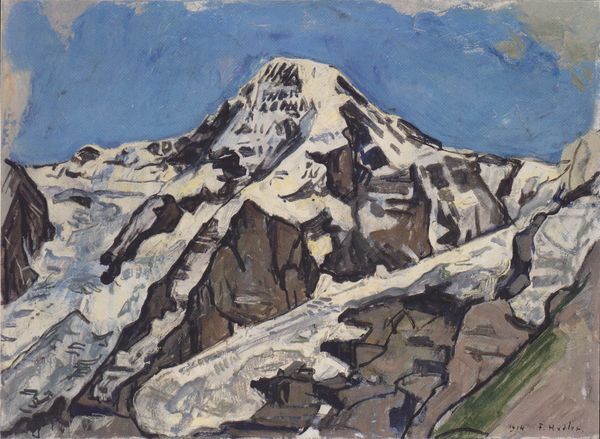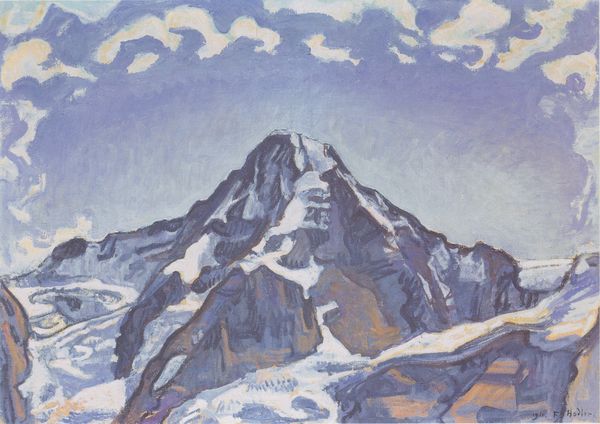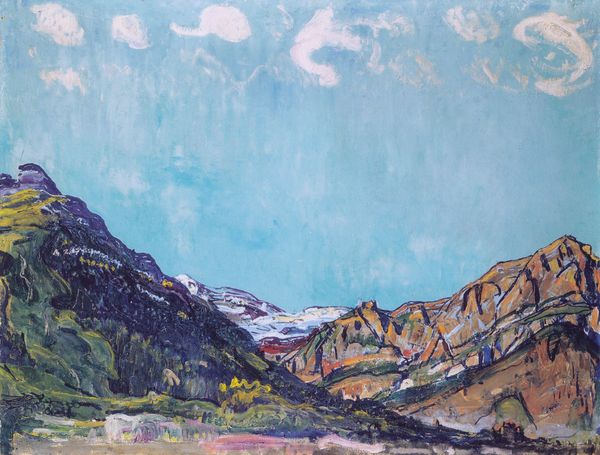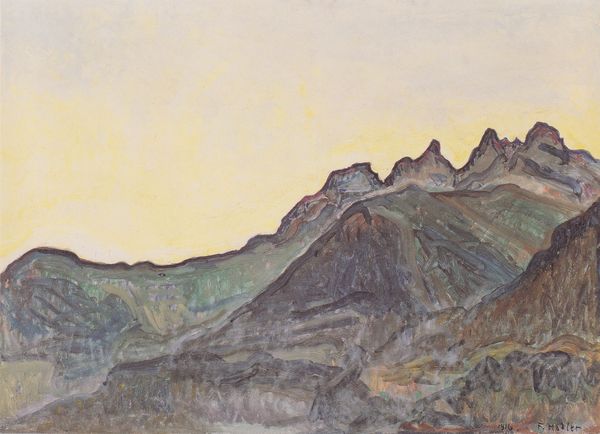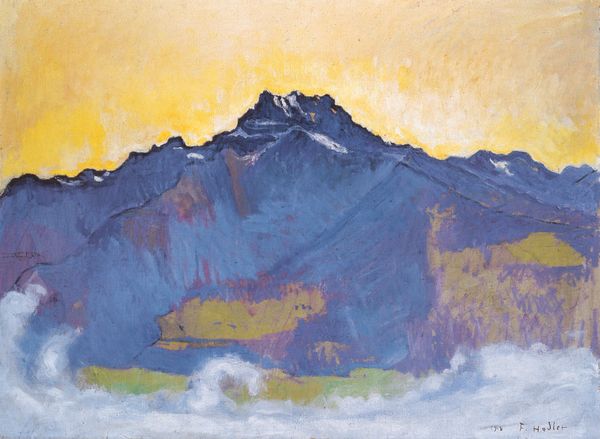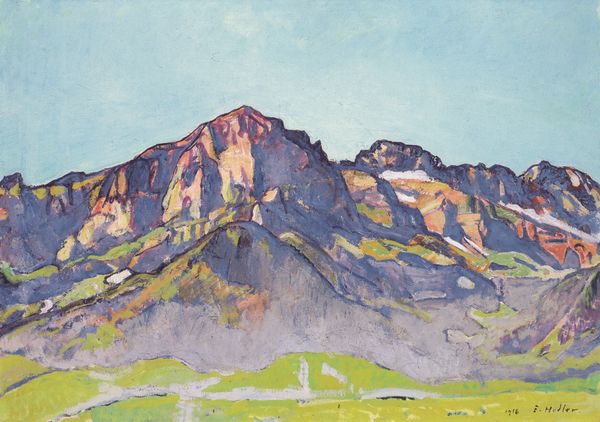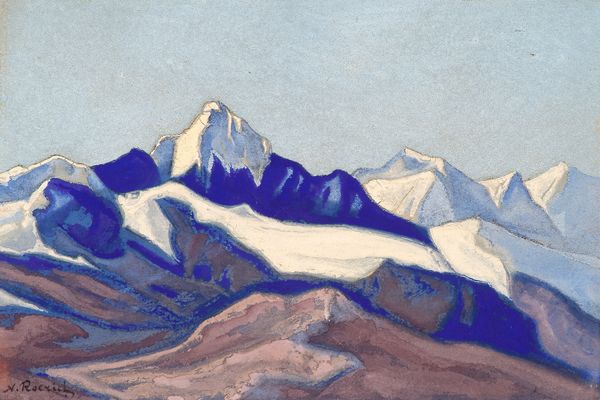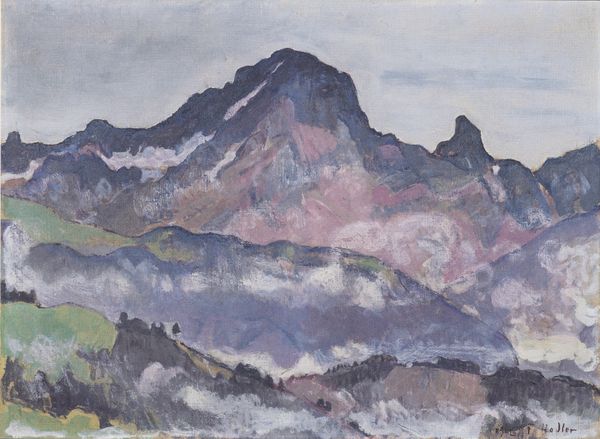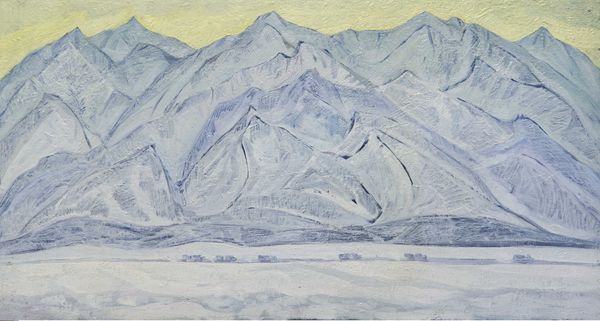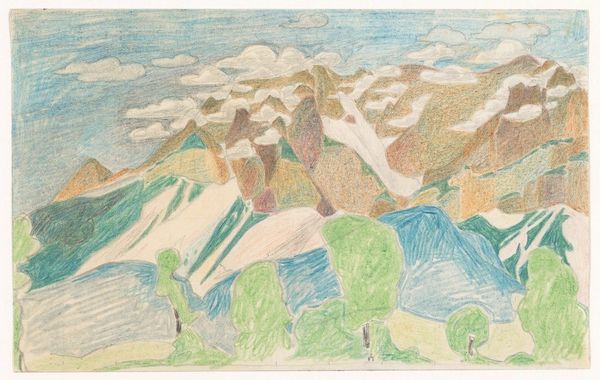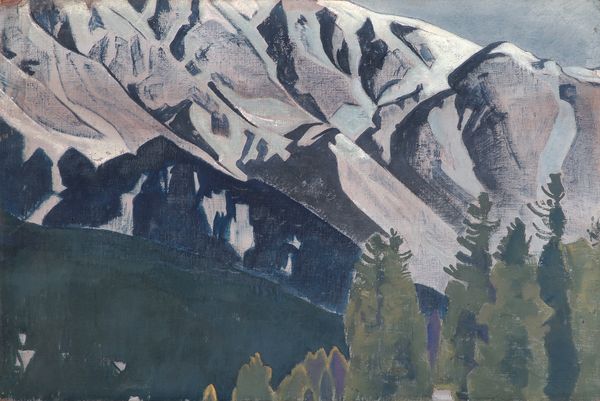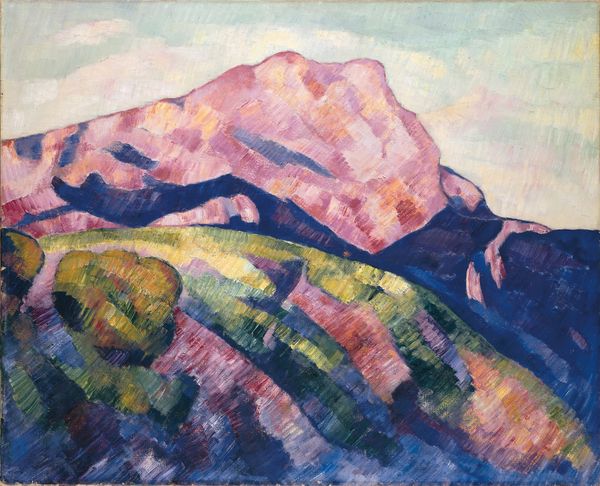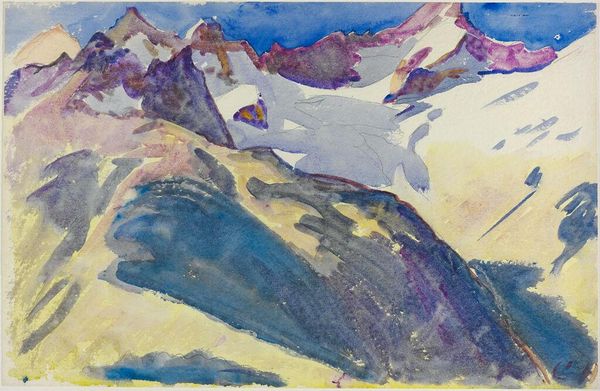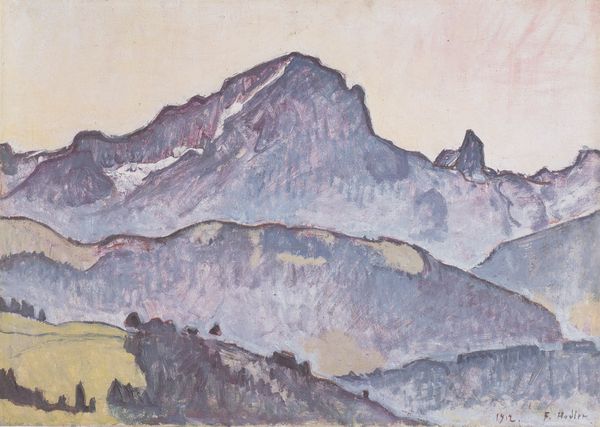
painting, oil-paint
#
painting
#
oil-paint
#
landscape
#
oil painting
#
rock
#
mountain
#
expressionism
#
modernism
#
expressionist
Dimensions: 65 x 88.5 cm
Copyright: Public domain
Editor: Here we have Ferdinand Hodler’s "Wetterhorn," painted in 1912 using oil paints. There's a solemn and powerful feeling in the way the mountain dominates the canvas. It is quite striking! What do you see in this piece? Curator: I see an archetypal mountain, a primal symbol of stability, endurance, and even spiritual aspiration. Notice the use of what Hodler termed "parallelism." Do you see how repeated shapes create rhythm and, dare I say, echo psychological concepts of mirroring? Editor: Now that you mention it, the repeated triangular forms and the rhythmic brushstrokes do lend a kind of mirroring quality, almost hypnotic. But what does this say about its cultural impact? Curator: The mountain as a motif holds weight across cultures. In Romanticism, it stood for the sublime power of nature. Here, however, Hodler perhaps strips away overt sentimentality, focusing on form to express universal experience. Ask yourself what the enduring symbol of a mountain might trigger across centuries: steadfastness? Challenge? Perhaps something more? Editor: That’s fascinating. It makes me consider how our understanding of a seemingly simple landscape can carry layers of meaning, influenced by historical context and these powerful symbols. It certainly opens up a lot to think about regarding how landscapes have influenced artists across time and geography. Curator: Exactly! Consider how Hodler's stark portrayal invites continued reflection of the mountain’s enduring presence. Each brushstroke layers new stories.
Comments
No comments
Be the first to comment and join the conversation on the ultimate creative platform.
